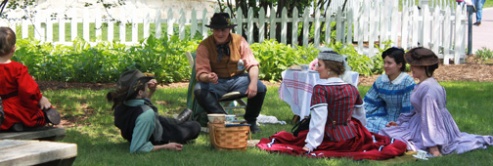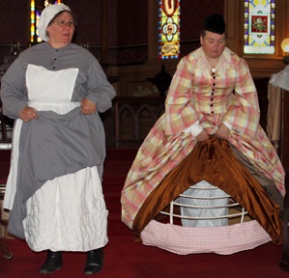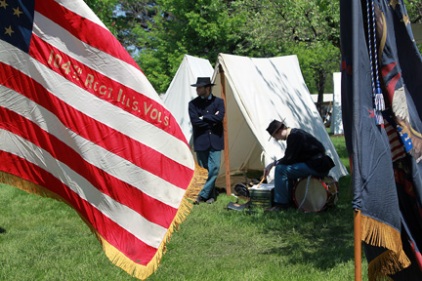Joss Whedon has advised writers to read widely and try new experiences. We in the Journey believe this fully, so our Paths are not restricted to writing-related activities. Jen recently organized our first Archery Path outing of 2014, though, due to an injury she was unable to attend this first session. Four of us went out to the indoor range at Glisson Archery in Plainfield (they charge $5 for rental equipment, $5 range fee per hour and $10 for an instructor if needed (all of these per-person fees)). With a better knowledge of the range rules below, the instructor fee can be avoided.
Range rules (safety rules) are pretty straight-forward; it is worth reading through these tips (basic archery).
- Only go to retrieve arrows after everyone has stopped firing and stepped back from the shooting line. Someone will call out “Clear!” or “All clear!”
- Never stand in front of a target; when walking up to the target to retrieve arrows, approach along a line to the side of the target.
- When retrieving arrows, always look back as you are pulling them out (someone might be standing behind you)
- Hold your loose arrows in the hand that is not pulling an arrow out–otherwise, your hand might be more prone to slip, which can cause injury if there are splinters in the carbon fiber arrows
- When everyone is back from retrieving arrows, people can then step up again to the shooting line. You should stand with your left or right side to the target. Never turn your bow sideways (doing so could interfere with an archer in front of you or behind you (along the shooting line).
- Nock your arrow below the bead on the string (and keep your three fingers snugly below the nock to help hold the arrow on the string)
- You can slightly tilt your bow as you draw the arrow back (to keep it from falling off the bow’s arrow rest.
- Some people shoot with one eye open; some shoot with two. This is to accommodate eye dominance.
- Make sure you keep your bow within the airspace above your box on the shooting line so that it doesn’t interfere with other archers.
- When you are finished shooting, step back from the shooting line and place your bow on the table.
It helps to have an archery glove or some leather glove to protect one’s fingers from the string. I bought this $13 dollar one on Amazon after last year’s inaugural Archery Path outing.
Cassidy was remarkably accurate. Kaden hit quite a few within the inner white circle (I think I only managed that three itmes).
Becky reported her fingertips on her shooting hand to be somewhat numb and tingly afterwards, in spite of her leather gloves.
After a pleasant hour of shooting, we headed to Moe Joe’s for some alligator tail and crab cakes (there was also Death by Chocolate and Bourbon Chocolate Cheesecake). Becky and Cassidy mentioned getting very tasty ramen at the Mitsuwa Marketplace in Arlington Heights. Becky promised to organize a Food Path outing there soon (the grocery store has Green Tea Kit Kat bars!).
Looking forward to our next outing!










